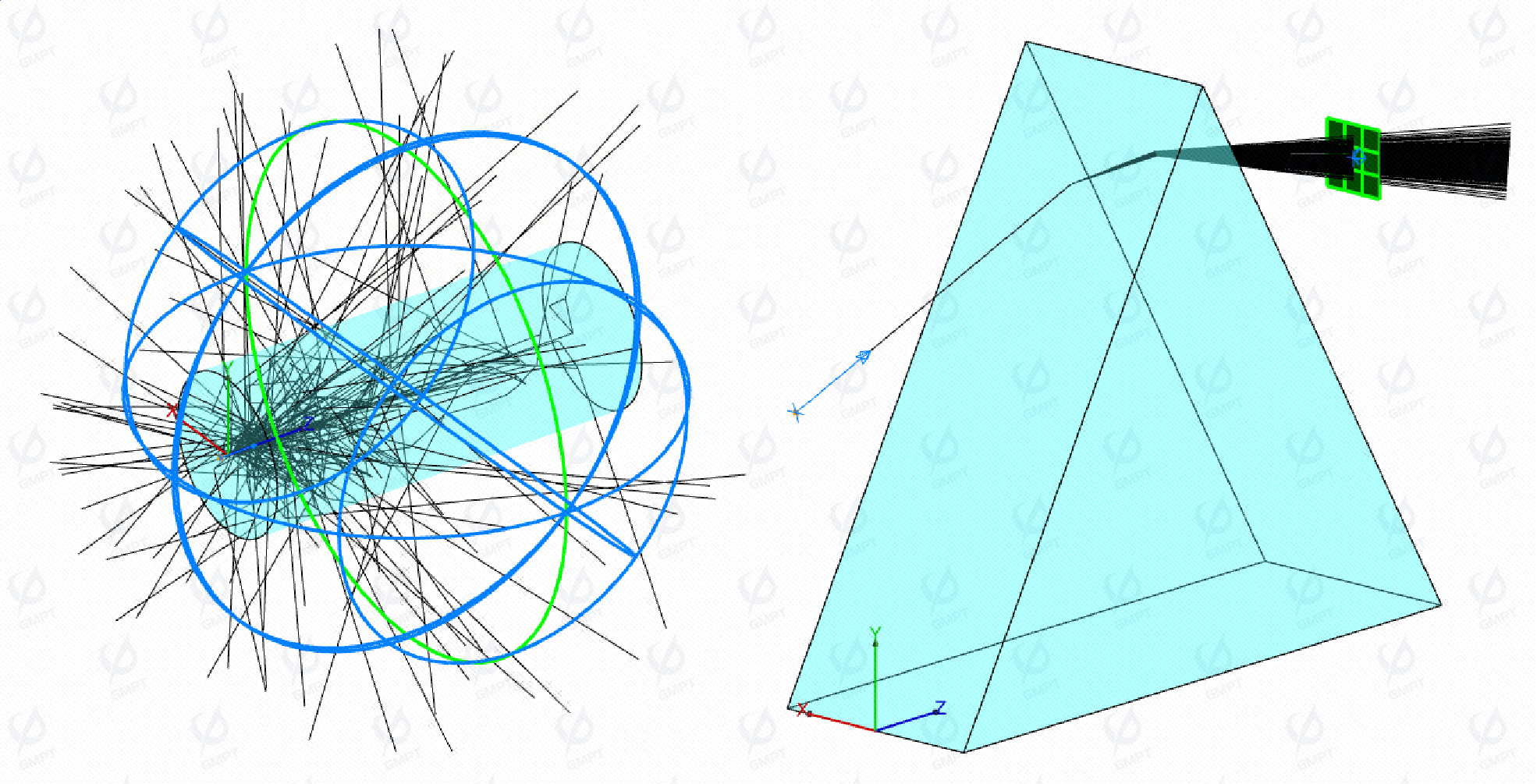Receivers
GMPT, October 2024
In simulation software programs that use ray tracing as a core algorithm, light sources and receivers are the two essential components supporting the program's operation. Receivers simulate optical sensors or detectors, such as photodiodes and photon counters, located on a plane or curved surface at the output end of the optical system to receive and record the results and information of light propagation. Depending on specific application needs and research objectives, receivers help us understand crucial information such as light propagation paths, imaging characteristics, energy distribution, and scattering behavior, providing a basis for optical system simulation, analysis, design, and optimization.
Rayzen allows for the addition of two types of receivers: far-field receivers and surface receivers. Far-field receivers are located in the radiation field of the optical system, far from the light source. They can be used to capture and record the intensity distribution of all light rays emitted from the optical system, enabling measurement and analysis of the output light's intensity distribution. Surface receivers, on the other hand, focus on the distribution characteristics of light within a specific area, such as illuminance distribution, intensity distribution, and luminance distribution. Based on this, further color analyses such as CIE, CCT analysis, CRI, and CQS comparison can also be performed.
Receiver List
- Receivers
- Surface Receiver
- Far-field Receiver
